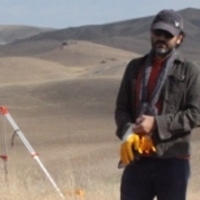
Hanifi Biber
Rfgttymunnrf
less
Related Authors
rafet çavuşoğlu
Yuzuncu Yil University
ismail coşkun
Yuzuncu Yil University
Salih KAYMAKÇI
Erzincan
Sabahattin Erdoğan
Yuzuncu Yil University
Razan Aykaç
Izmir Katip Celebi
Aytaç Coşkun
Dicle University
Armağan Tan
Istanbul University
Bülent Genç
Artuklu University
Ceren Demirton
Philipps Universität Marburg










Uploads
Papers by Hanifi Biber
despite being a mountainous region and with its climatic challenges. It has been
inhabited continuously since prehistoric times and managed to become the focal
point of many great cultures, kingdoms, and states. Specifically, the great migrations
thought to have started at the end of the Chalcolithic Age and the subsequent
cultures continued to use the region as their homeland. These migration waves, in
the Muş Region, have previously been documented by only limited research. Now,
more data have been collected with the Tepeköy Mound excavations. Tepeköy is
an important mound as it is the first layered mound excavation in the Muş Region.
The excavations Medieval, Iron Age and Bronze Age layers where some rich features
of the architecture and objects could be seen. It provides data on the Early and
Middle Iron (Urartian) periods of the Iron Ages. Mound, which started with the Early
Transcaucasian Culture and used continuously until today, provides crucial data for
the history of both the Muş Region and the Eastern Anatolia Region. Being a unique
center with its stratification, architectural elements and other finds, the mound may
answer many questions on the history of the region and transcaucasian migrations.
Books by Hanifi Biber
despite being a mountainous region and with its climatic challenges. It has been
inhabited continuously since prehistoric times and managed to become the focal
point of many great cultures, kingdoms, and states. Specifically, the great migrations
thought to have started at the end of the Chalcolithic Age and the subsequent
cultures continued to use the region as their homeland. These migration waves, in
the Muş Region, have previously been documented by only limited research. Now,
more data have been collected with the Tepeköy Mound excavations. Tepeköy is
an important mound as it is the first layered mound excavation in the Muş Region.
The excavations Medieval, Iron Age and Bronze Age layers where some rich features
of the architecture and objects could be seen. It provides data on the Early and
Middle Iron (Urartian) periods of the Iron Ages. Mound, which started with the Early
Transcaucasian Culture and used continuously until today, provides crucial data for
the history of both the Muş Region and the Eastern Anatolia Region. Being a unique
center with its stratification, architectural elements and other finds, the mound may
answer many questions on the history of the region and transcaucasian migrations.